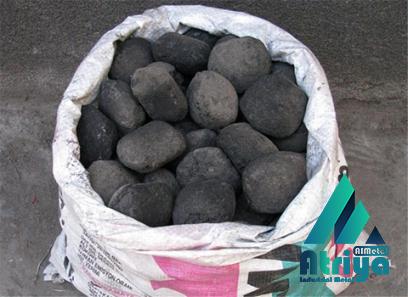A Resourceful Solution for the Steel Industry In the steel manufacturing process, one of the primary challenges faced is the generation of waste materials. These byproducts can have a detrimental impact on the environment if not handled properly. However, with the advancements in technology and sustainable practices, industries are now seeking innovative ways to manage their waste and turn it into a valuable resource. One such solution is Direct Reduced Iron (DRI) sludge. DRI sludge is a byproduct of the Direct Reduced Iron process, which involves converting iron ore into a more refined and purer form of iron. This process is widely used in the steel industry for its numerous advantages, including energy efficiency and reduced greenhouse gas emissions. However, like any manufacturing process, it generates waste, and in the case of DRI, this waste is in the form of sludge. Traditionally, DRI sludge was considered a burden and was often disposed of in landfills.

.
 However, with increasing environmental awareness and stricter regulations, the steel industry has started exploring ways to turn this waste material into a valuable resource. One of the main uses of DRI sludge is in the cement industry. The composition of DRI sludge, which contains iron oxide and carbon, makes it an excellent raw material for cement production. When used as an alternative fuel and raw material in cement kilns, DRI sludge can replace a portion of the traditional fossil fuels and raw materials, reducing both costs and environmental impact. Furthermore, DRI sludge can also be utilized in the construction industry. Its high iron content makes it an ideal material for creating concrete blocks, pavement bricks, and other construction materials. This not only reduces the dependency on traditional raw materials but also decreases the overall carbon footprint of the construction sector.
However, with increasing environmental awareness and stricter regulations, the steel industry has started exploring ways to turn this waste material into a valuable resource. One of the main uses of DRI sludge is in the cement industry. The composition of DRI sludge, which contains iron oxide and carbon, makes it an excellent raw material for cement production. When used as an alternative fuel and raw material in cement kilns, DRI sludge can replace a portion of the traditional fossil fuels and raw materials, reducing both costs and environmental impact. Furthermore, DRI sludge can also be utilized in the construction industry. Its high iron content makes it an ideal material for creating concrete blocks, pavement bricks, and other construction materials. This not only reduces the dependency on traditional raw materials but also decreases the overall carbon footprint of the construction sector.
..
 In addition to its uses in cement and construction, DRI sludge can also be utilized in agricultural applications. The iron-rich composition of DRI sludge can be beneficial for soil amendment by improving its fertility and nutrient content. Farmers can use DRI sludge as an alternative to synthetic fertilizers, reducing their dependence on chemical inputs and promoting sustainable agricultural practices. Apart from its direct applications, DRI sludge can also be processed to recover valuable metals, such as iron and carbon. Several recycling technologies have been developed to extract and recycle these metals from DRI sludge, further enhancing its economic value and reducing the demand for virgin resources. The utilization of DRI sludge not only reduces waste generation but also contributes to the circular economy.
In addition to its uses in cement and construction, DRI sludge can also be utilized in agricultural applications. The iron-rich composition of DRI sludge can be beneficial for soil amendment by improving its fertility and nutrient content. Farmers can use DRI sludge as an alternative to synthetic fertilizers, reducing their dependence on chemical inputs and promoting sustainable agricultural practices. Apart from its direct applications, DRI sludge can also be processed to recover valuable metals, such as iron and carbon. Several recycling technologies have been developed to extract and recycle these metals from DRI sludge, further enhancing its economic value and reducing the demand for virgin resources. The utilization of DRI sludge not only reduces waste generation but also contributes to the circular economy.
…
 By transforming waste into a resource, the steel industry can mitigate its environmental impact, reduce landfill usage, and conserve natural resources. Additionally, the utilization of DRI sludge can also result in cost savings for the steel industry, making it an economically viable solution. In conclusion, DRI sludge, once considered a waste material, is now recognized as a valuable resource in multiple industries. Through its applications in the cement, construction, and agricultural sectors, DRI sludge offers a sustainable solution for waste management in the steel industry. With ongoing research and development, the potential for further utilization of DRI sludge is vast, and its incorporation into various industries can contribute significantly to a greener and more sustainable future.
By transforming waste into a resource, the steel industry can mitigate its environmental impact, reduce landfill usage, and conserve natural resources. Additionally, the utilization of DRI sludge can also result in cost savings for the steel industry, making it an economically viable solution. In conclusion, DRI sludge, once considered a waste material, is now recognized as a valuable resource in multiple industries. Through its applications in the cement, construction, and agricultural sectors, DRI sludge offers a sustainable solution for waste management in the steel industry. With ongoing research and development, the potential for further utilization of DRI sludge is vast, and its incorporation into various industries can contribute significantly to a greener and more sustainable future.











Your comment submitted.